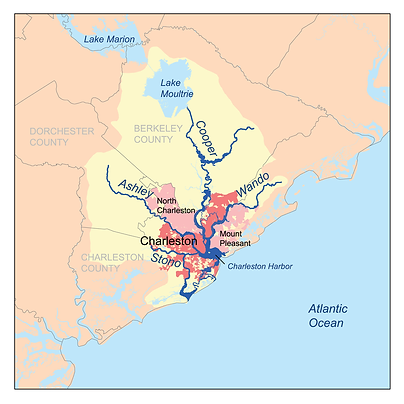
Author: Kevin Daley
History According To Kevin Daley
Origin
Early in the morning on September 9, 1739, about twenty slaves gathered a few miles outside of Charleston, South Carolina, preparing for what would become the largest slave uprising in American history (“The Stono Rebellion.”). This bloody conflict, which resulted in over one hundred deaths, has an essentially unknown origin, which boils down to no more than speculation and obscurity. Some sources suggest that the slaves were attempting to escape to Spanish controlled Florida, which had recently declared freedom and land for all fugitive British slaves in an attempt to hinder the English colonies’ economical progression ("Stono Rebellion (1739) | The Black Past: Remembered and Reclaimed."). Others suggest the new Security Act to be the root of the problem. Under the Act, all white men were required to carry firearms to church on Sundays, perhaps the slaves simply saw an opportunity as all armed white men were away and seized it accordingly (“The Stono Rebellion.”). Many sources, however, fail to observe that these “causes” may have simply been added incentive to a more general underlying motive. By human nature, one man does not seek to be oppressed by another, therefore; attempts to oppress are very often met with strong resistance.



The Incident
The assembled group, led by a slave named Jemmy, departed from their position near the Stono River, and headed first to a shop that sold arms and ammunition. The mob supplied themselves with weapons, killed the two shopkeepers, and headed onward towards town (“The Stono Rebellion”& "Stono Rebellion (1739)”). The Slaves then began to reach clusters of houses, killing all whites within the homes and any they saw while en route from one to another. Along the way, the mob kept accumulating more rebels, some willing, some forced, so that by 11am they were about 50 strong (“The Stono Rebellion”). Despite the group’s rampant killing, one man, Lieutenant Governor Bull, managed to elude the slaves and raise the alarm. A white militia responded quickly, meeting the mob in a field after their 10 mile, twenty-five casualty march. The ensuing battle resulted with about another twenty white deaths, and around thirty slave deaths (“Stono’s Rebellion.”). Another thirty slaves fled the conflict, but were all rounded up and executed within the following 6 months (“The Stono Rebellion”).
Legacy
The intense conflict that was the Stono Rebellion pushed new slave limitations to the forefront of colonial legislation (“The Stono Rebellion”). The new laws prohibited slaves from growing their own food, assembling groups, earning personal money, and learning to read. The laws also called for one white to be present for every 10 slaves (Smith 20 -27). This violence from the slaves left a sour taste in white Americans’ mouths, and only added to the tension between the oppressed and their oppressors. The resulting harsh legislation also played a roll in racial tensions throughout the nation’s history, legally empowering whites to abuse and exploit, and thus creating a mentality that became prevalent through the 20th century and exists even today.
Works Cited
1."The Stono Rebellion." PBS. PBS, n.d. Web. 06 Oct. 2015. <http://www.pbs.org/wgbh/aia/part1/1p284.html>.
2. "Stono's Rebellion." Stono's Rebellion. N.p., n.d. Web. 06 Oct. 2015. <http://www.americaslibrary.gov/jb/colonial/jb_colonial_stono_1.html>.
3. "Stono Rebellion (1739) | The Black Past: Remembered and Reclaimed." Stono Rebellion (1739) | The Black Past: Remembered and Reclaimed. N.p., n.d. Web. 06 Oct. 2015. <http://www.blackpast.org/aah/stono-rebellion-1739>.
4. Brinkley, Alan. The Unfinished Nation: A Concise History of the American People. Boston: McGraw-Hill, 2004. Print.
5. Smith, Mark M. Stono: Documenting and Interpreting a Southern Slave Revolt. Columbia, SC: U of South Carolina, 2005. Print.
Images
https://upload.wikimedia.org/wikipedia/commons/7/7a/Charlestonriversmap.png
http://www.blackpast.org/files/blackpast_images/stono_rebellion.jpg